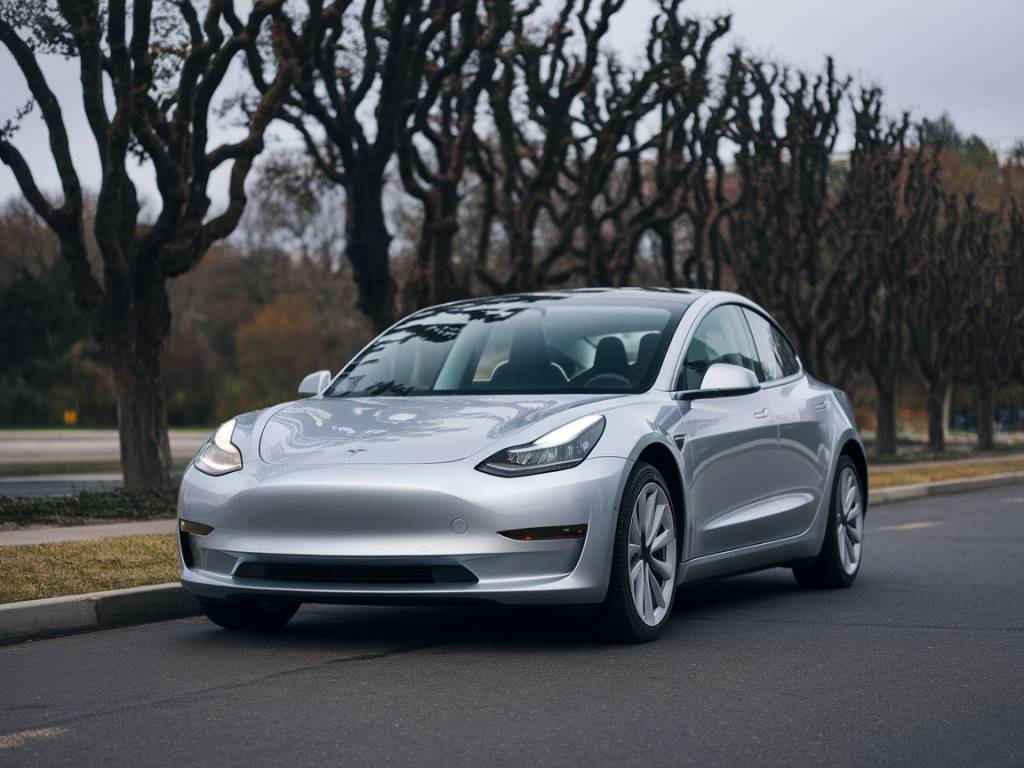The automotive industry is experiencing a significant transformation with the increasing popularity of electric vehicles (EVs). One EV that stands out as a game-changer in the U.S. auto market is the Tesla Model 3. This article delves into how the Tesla Model 3 is disrupting traditional automotive paradigms and shaping the future of the industry.
A Brief Overview of Electric Vehicles
Electric vehicles have come a long way since their inception. Initially, EVs were deemed impractical due to limited range, high costs, and insufficient charging infrastructure. However, with advancements in battery technology, increased environmental awareness, and government incentives, EVs have seen a resurgence in popularity. This rise is exemplified by the success of the Tesla Model 3, among other models.
The Genesis of Tesla Model 3
Tesla, Inc., founded by Elon Musk, aimed to create a mass-market electric vehicle with the Tesla Model 3. Launched in 2017, the Model 3 was designed to be more affordable compared to its predecessors like the Model S and Model X. With a starting price of around $35,000, it quickly became a sought-after vehicle.
The Tesla Model 3 offers several configurations, including Standard Range Plus, Long Range, and Performance versions. With impressive range options, cutting-edge technology, and a less prohibitive price point, the Model 3 has captivated a broad audience, from eco-conscious consumers to tech enthusiasts.
Impact on Traditional Automakers
The success of the Tesla Model 3 has put pressure on traditional automakers to innovate and accelerate their own EV programs. Several key impacts include:
- Increased R&D Investment: Major automakers such as General Motors, Ford, and Volkswagen have significantly increased their investment in EV research and development to compete with Tesla’s offerings.
- New EV Models: Traditional automakers are launching an array of EV models to diversify their portfolios. For instance, both Ford’s Mustang Mach-E and GM’s Chevy Bolt are direct competitors to the Model 3.
- Partnerships and Collaborations: Collaborations with tech companies and startups are becoming more common. For example, BMW and Jaguar Land Rover have formed joint ventures to develop electric drivetrains.
Advancements in Battery Technology
Battery technology is a critical component in the proliferation of EVs. The Tesla Model 3 features advanced lithium-ion battery packs developed through extensive research and innovation. Key advancements include:
- Increased Energy Density: Modern batteries have higher energy densities, which translate to longer ranges. The Model 3 can achieve up to 353 miles on a single charge, which alleviates range anxiety for many drivers.
- Faster Charging Times: Tesla’s Supercharger network allows for rapid charging, offering up to 170 miles of range in just 30 minutes, which significantly improves the convenience factor.
- Cost Reduction: As battery costs decrease, the overall cost of EVs becomes more competitive with internal combustion engine (ICE) vehicles.
Environmental Impact and Regulations
The Tesla Model 3 is also contributing to environmental sustainability. EVs produce zero tailpipe emissions, which means they do not contribute to urban air pollution. Additionally, many of Tesla’s components are recyclable, further reducing their environmental impact.
Government regulations and incentives have also played a crucial role in promoting EV adoption. Federal tax credits, state rebates, and grants for charging infrastructure have made EVs more accessible to the average consumer.
Innovative Technology and Consumer Appeal
The Model 3 is equipped with state-of-the-art technology that enhances the driving experience. Some of these technological innovations include:
- Autopilot and Full Self-Driving (FSD) capabilities: Tesla’s advanced driver-assistance systems (ADAS) offer semi-autonomous driving features that enhance safety and convenience.
- Over-the-Air (OTA) Updates: Tesla regularly updates software remotely, enhancing existing features and adding new ones, ensuring that the vehicle improves over time.
- Minimalistic Design: The interior of the Model 3 features a sleek, minimalistic design focused around a single, central touchscreen, reducing clutter and enhancing user experience.
The Role of Infrastructure
The availability of charging infrastructure is essential for the adoption of EVs. Tesla’s Supercharger network is one of the most extensive and efficient EV charging networks in the world. This robust infrastructure ensures that Tesla owners can travel long distances with minimal inconvenience.
Additionally, there are increasing initiatives to install more public charging stations across the U.S., supported by both the private sector and government funding. These developments are critical as more consumers consider switching to EVs.
The Skeptics and Challenges
Despite its success, the Tesla Model 3 faces challenges. Some skeptics point out issues such as initial build quality inconsistencies, the high cost of battery replacement, and concerns over the long-term reliability of electric drivetrains. Furthermore, the broader EV market still contends with challenges such as:
- Battery Recycling: Effective recycling methods for lithium-ion batteries are still under development, and proper disposal remains a concern.
- Raw Material Sourcing: The sourcing of raw materials such as lithium, cobalt, and nickel presents environmental and ethical challenges.
- Grid Capacity: The increased demand for electricity to charge EVs puts additional pressure on power grids, necessitating upgrades and increased capacity.
The Future of EVs and the Tesla Model 3
The trajectory of the Tesla Model 3 indicates a promising future for EVs. As battery technology continues to improve and production scales up, EVs are expected to become even more affordable and practical. Innovations such as solid-state batteries and further advancements in autonomous driving could revolutionize the industry.
Moreover, the competitive landscape is expected to expand with new entrants and innovative models from established manufacturers. This competition will likely spur further advancements and greater consumer choice.
The Tesla Model 3 has undeniably disrupted the U.S. auto market by challenging traditional automakers, pushing technological boundaries, and promoting environmental sustainability. Its influence is evident in the adoption rates of EVs and the strategic pivots of legacy automotive companies towards electrification. As the automotive landscape evolves, the Model 3’s role as a catalyst for change remains a pivotal chapter in the history of transportation.

